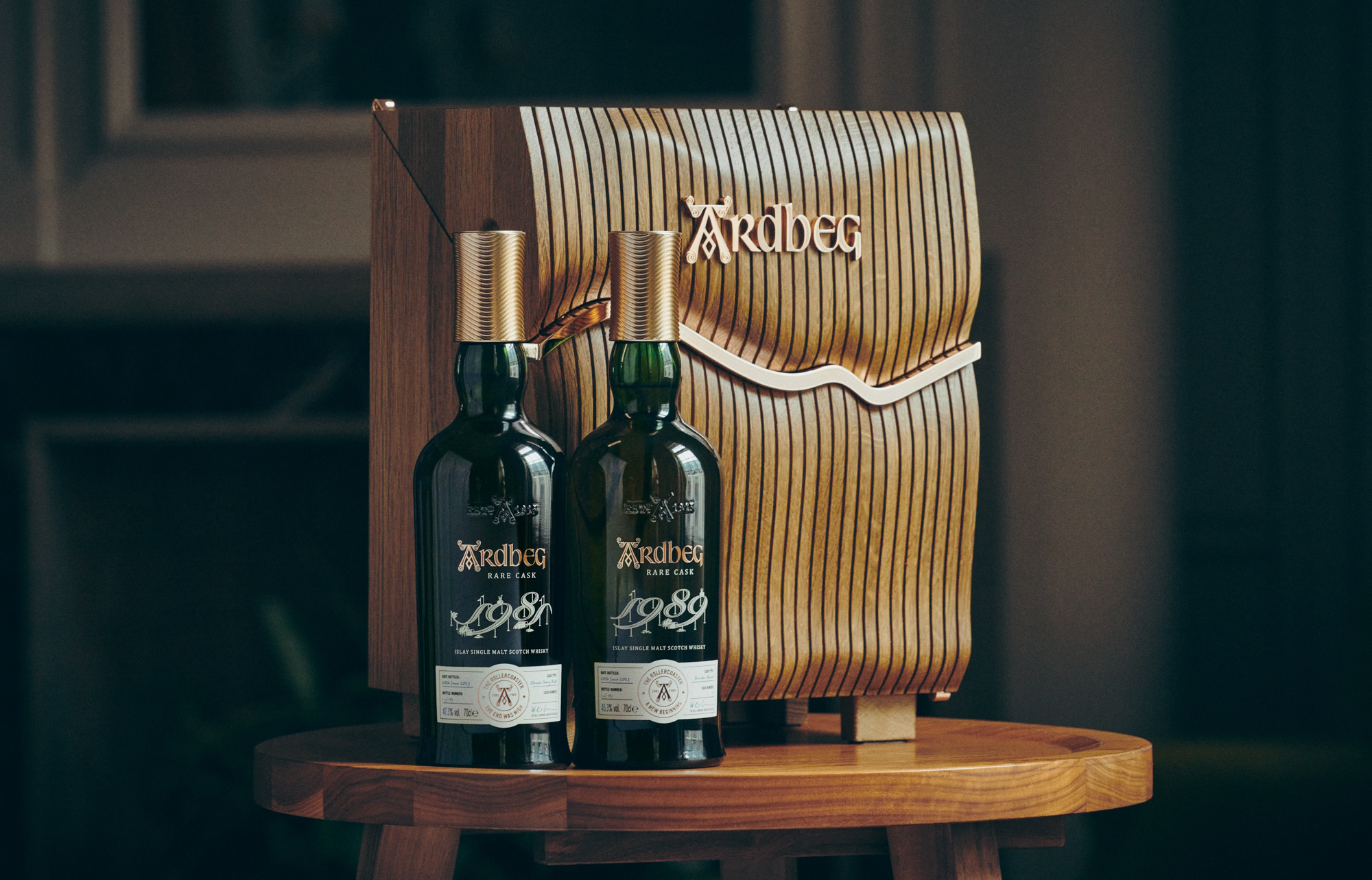Rollercoaster from Ardbeg. Times two

Ardbeg announced the release of a set of two extraordinary whiskies, dating back to two landmark moments in the distillery's history. Ardbeg: The Rollercoaster is two bottles, offered in a set, each of which individually would easily deserve to be called legendary.
Set The Rollercoaster it's Ardbeg 1981 42yo (47.3% vol.) i Ardbeg 1989 33yo (45.3% vol.) are the contents of the last barrel before the distillery closed in 1981, one of the last whiskies distilled from barley malted on site in the distillery's maltings and dried with peat smoke on site, and the contents of one of the first barrels after production restarted at Ardbeg following its takeover by Allied Distillers.
However, that's not all that makes these two editions of the series The Rollercoaster unique. Owned partly by DCL and partly by Hiram Walker, the distillery began using the Port Ellen malting plant as early as 1974. This does not mean that the Ardbeg malting plant has stopped operating. At least. Until it closed in March 1981, a malting plant operated at Ardbeg that smoked barley malt to as high as 110ppm - a feat only repeated this century by Bruichladdich while working on the Octomore brand. For a time, it also produced peated fine malt for what we would today call the "Kildalton style." Ardbeg 1981 42yo from the edition of The Rollercoaster is a whisky that was made from a blend of malts - this strongly peaty 110 ppm, and this slightly smoky, Kildalton-style one. This whisky began the maturation process in bourbon barrels, after which it was transferred to an oloroso sherry barrel.
The second bottle in this extraordinary edition, Ardbeg 1989 33yo, is a memento of the reactivation of the distillery after it was bought out by Allied Distillers, however, when it was decided not to resume the malting works anymore. At the time, the malt used to make whisky came from a malt house in Port Ellen and was smoked to a level of 30-35 ppm. This whisky first went into bourbon barrels, and eventually ended up in a single ex-bourbon refill barrel.
As you can easily guess, both bottles in the set contain whiskey in its most natural form - no cold filtering, no caramel coloring and no dilution. Only 143 sets have been prepared, offered in a decorative oak box. It was designed by John Galvin and made of Scottish oak. The price of a single set is set at £85,000.
Much has been said - and written - about the recent history of Ardbeg and its truly phoenix-like rise from the ashes through Glenmorangie plc in the final years of the 20th century. However, it is worth knowing that it is one of the oldest whisky makers currently operating on Islay - only Bowmore (1779) is older, and Laphroaig (1815) is its peer. Just a glance at the distillery's buildings, which have been preserved to this day, and its three pagodas, crowning as many as two (!) former maltings shows the enormity of the undertaking. By the end of the 19th century, the distillery's output had reached a level of 1.1 million liters of pure alcohol per year, unbelievable for the time. That's roughly how much was produced in 2019, before the plant's latest expansion. Ardbeg was the largest whisky maker on Islay at the time. In its heyday years, Ardbeg was not just a distillery, but a bustling, quite populous settlement with all the institutions needed for residents to live, including a school, a bakery, a shoemaker's shop, etc. The distillery's name and the logo we know today in the form of the distinctive, stylized letter A were registered as early as 1911.
The contribution of women to the development of the Scottish distilling industry is well known, in particular Bessie Williamson at Laphroaig, or Helen Cumming, to whom we owe the Cardhu distillery. Ardbeg also has its own glorious page in the history of distillery feminism. And it is by no means about the current head of the local Visitor Centre, Jackie Thomson - although a low bow is also due to her. For behold, as early as 1853, after the death of owner Alexander Macdougall, the running of Ardbeg was in the hands of his sisters Margaret and Flora. It is safe to make the claim that they were the first women in the history of Scotch whisky to take it upon themselves to run a distillery. And successfully.
The Ardbeg editions appearing on the market can be divided into popular editions, intended for everyday consumption and enjoyed by Scotch whisky enthusiasts, and collector's editions, rare and old. It's not hard to guess which of these categories the two components of The Rollercoaster set fall into. However, it is worth looking into the current offer of the House of Whisky Online, to see that we have whiskies representing both categories to offer. The whisky consumer, and at the same time an amateur of peaty whisky from Islay, will find with us excellent editions included in the basic Ardbeg offer, but also the most advanced collector will not meet disappointment with us. We invite you to visit and see for yourself the truth of this thesis.
[15.11.2023 / photo: Ardbeg]